Rabies
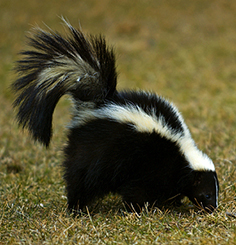
Although the Centers for Disease Control stated in 2007 that canine rabies has been totally eradicated in the United States, they also caution that the only way for us to continue to enjoy this rabies-free status is to continue the current practice of vaccinations. It’s also important to recognize that there are other strains of rabies that can infect your dog if he is bitten by a wild animal such as a skunk, bat, raccoon, or fox. In addition, dogs brought into the United States from foreign countries may also carry canine rabies into the country with them.
How is rabies spread?
The rabies virus is shed through the saliva of an infected animal; however, only about 15% of those who are bitten by a rabid animal will go on to develop the disease. In very rare cases, it has been reported that the rabies virus was spread in the air, but this typically occurs only in caves with large populations of bats. Without a host animal in which to live, the rabies virus dies very quickly. In the carcass of a dead host animal, the virus may live as long as 24 hours.
How is rabies prevented?
The best method for keeping your dog rabies free is to get him vaccinated against the disease. The most common protocol is to give an initial vaccination at 3 – 4 months of age, then another shot at 1 year. A year later, another vaccination is given, good for either 1 or 3 years. Most jurisdictions in the United States require that all dogs be vaccinated, sometimes by state law, sometimes by county or city law. However, estimates are that as many as half of the dogs in this country are not up to date on their vaccines. Depending on where you live, you may be required to give your dog an annual booster or you may only be required to update his rabies shot every three years. Your veterinarian can tell you what is required in your area.
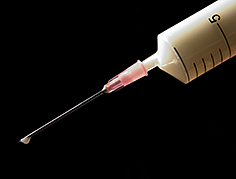
You can also protect your dog by keeping him away from wild animals that may be carrying the disease. If you see a wild animal near your home in the middle of the day, chances are he is sick and you should take your dog indoors and call animal control. Most wild animals have no desire for human contact. If the animal is willing to come near you, you should be suspicious of his health status. What do I do if my dog has been bitten by a wild animal?
Chances are, you will never know whether or not the animal who bit your dog is rabid or not, so you must take action as if it were. The rabies virus can be spread through the saliva of an infected animal as early as 10 days before the animal begins to show symptoms.
If your dog’s rabies vaccinations are up to date, you should have your vet re-vaccinate your dog to give added protection. Your dog should be quarantined for 90 days to make sure symptoms do not develop.
If your dog has not been kept up to date on his shots, the only recommended option after being bitten by a wild animal is to euthanize the dog and send his brain tissue for rabies testing. The only way to definitively prove whether or not a dog has rabies is to examine sections of the brain under a microscope. If you cannot bring yourself to do this, the dog must be quarantined for six months and must be vaccinated one month before being released from quarantine.
What are the symptoms of rabies?
After a bite by an infected animal, the rabies virus slowly travels through the dog’s body until it reaches the brain. This journey takes between 3 and 8 weeks in dogs, although there have been cases where the virus travels around the body for as long as 6 months before settling in the brain. During this incubation period while the virus is making its way to the brain, the dog will appear healthy, with no signs or symptoms of an infection. From the brain, the virus then travels to the salivary glands where it can infect another animal when the infected animal bites. Rabies virus can also be transmitted in other bodily fluids like tears, breast milk and urine.
Once the virus reaches the dog’s brain, he will go through three stages very rapidly before succumbing to the rabies virus. In the prodromal phase, which lasts 2 – 3 days, the dog may develop a fever and become nervous. In addition, the dog’s demeanor is likely to change drastically. Friendly dogs may become aggressive, while normally aggressive dogs are converted into affectionate, calm dogs.
In the furious or excitable phase, lasting 1 – 7 days, the dog will become restless and disoriented. He may attack his cage or other inanimate objects and be very sensitive to noise. Seizures are common during this stage. The paralytic stage, which may occur after either of the first two phases, starts 2 – 4 days after symptoms are first noticed. The virus infects the nerves of the head and throat, making it hard for the dog to swallow. He may begin to “foam at the mouth” as his saliva overflows. As paralysis spreads to the breathing muscles and the muscles of the face, the dog may have trouble breathing and his jaw may droop.
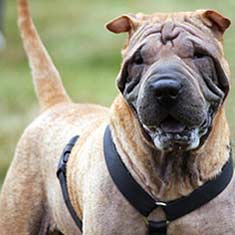
Rabies has a kill rate of over 99% within 3 – 7 days of the onset of symptoms, causing death by creating respiratory failure. Once the dog begins to show symptoms of any of the three phases, there is no treatment. There is no cure for rabies, but humans may be given a series of vaccinations to prevent the disease from developing after a bite from an infected animal. Because so many places in the world do ot require rabies vaccinations for animals, at least 55,000 humans worldwide die each year from the disease, about 1 death every 10 minutes.
What should I do if I’ve been bitten by a dog?
First, wash the area thoroughly with soap and warm water. If you know that the dog is healthy and you have seen proof of a current rabies vaccination, insist that the animal be quarantined for 10 days, then seen by a veterinarian to check for symptoms of rabies. If you seek treatment at a hospital, they will likely notify the health department, which in turn will deal with the dog’s family.
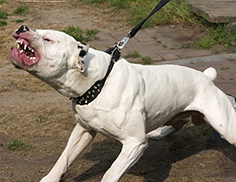
If you don’t know whether the dog has been vaccinated, you will likely have to be given a series of five vaccine shots. Do not take the owner’s word for it; insist on seeing the vaccination papers yourself. This disease has the potential for killing you. Even if you trust the person implicitly, this matter is too important for you to leave to chance.
Once infection occurs, the rabies virus grows in muscle tissue and may go undetected for several days or months. During this incubation (or latent) period, the animal appears healthy and shows no sign of infection.
Doggies Den: Latest Articles
 Homemade Thanksgiving Treats for Your Dog
Homemade Thanksgiving Treats for Your Dog
NUTRITION We all want to include our dogs in our holiday celebrations, but hopefully, you're aware that sharing table scraps with your dog isn't always the best idea.
 Keeping Your Dog Safe during the Summer Months
Keeping Your Dog Safe during the Summer Months
HEALTH Summer is coming on fast, so it’s time to plan how you will keep your dog safe and healthy through the lazy, carefree, warm days.
 Vaccination Time Again-Keeping Your Puppy Healthy
Vaccination Time Again-Keeping Your Puppy Healthy
DOG HEALTH So you have your new puppy picked out. There are quite a few shots, treatments and examinations that will keep the newest member of your family healthy.
 Canine Thanksgiving Feast
Canine Thanksgiving Feast
NUTRITION With the wide variety of food at Thanksgiving dinner, chances are you'll want to give your dog something special, too. If you're contemplating what to feed your dog for the holiday, here is a guide to a great Canine Thanksgiving Feast.
 Dog Walking Tips Every Owner Should Know
Dog Walking Tips Every Owner Should Know
DOG FUN Walking your dog is not only crucial to keeping him healthy and happy, it strengthens the bond between your canine friend and his caregiver. There are a lot of obstacles out there. Don’t forget these simple tips to keep your walk fun and safe in the outside world.
 The Benefits of Physiotherapy for your Dog
The Benefits of Physiotherapy for your Dog
HEALTH The same techniques that physiotherapists use to treat a variety of injuries and conditions in humans have been adapted to suit animals with great success. Family pets, show dogs, and working dogs can all benefit greatly from physiotherapy. Dogs whose activities involve a lot of agility are especially susceptible to the types of problems that physiotherapy can address.
 The Decision- Adding a Dog to Your Family
The Decision- Adding a Dog to Your Family
FIRST TIME OWNERSBringing a dog into your family is a decision where many people don’t realize it’s magnitude until after they have the dog. There are a number of things that you need to research before you decide to purchase a dog, and it starts right in your own home.
 Bringing Your Dog Into Your New Baby's Life
Bringing Your Dog Into Your New Baby's Life
HEALTH Many believe that a dog and a new baby cannot happily coexist, so therefore the dog has to go. This is not necessarily the case.  A new baby does not mean you have to abandon your dog.

Doggies Den:
Most Popular Articles

Dog Pregnancy Symptoms
HEALTHIf you suspect your dog might be pregnant, check out part one in this series on pregnant dogs, where we cover pregnant dog symptoms.
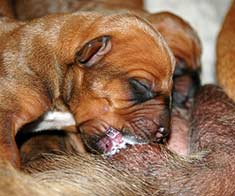
Dog Birth
HEALTHIn the third article of our dog pregnancy series, we look at the wonderful, but messy, process of bringing newborn puppies into the world.

Indoor Dog Potties
DOG PRODUCTSIt's been a long day at work. You were so busy, you didn't even take time to eat a sandwich, let alone run home to let your dog out. You're on your way home, knowing the poor dog is crossing his or her legs by now, when your car breaks down, delaying you even further. Can't somebody make this easier?

Your Dog’s Digestive System
PHYSIOLOGYEver wonder why your dog eats so fast? Or why he eats gross things? Or why he gets sick to his stomach? Or why his waste stinks so bad? Some of these things are normal, some are not.

Canine Respiratory System
BREATHINGThe basic function of your dog's respiratory system is to bring oxygen in to and remove carbon dioxide from the body. Knowing the symptoms of respiratory diseases can help you help your stay healthy.
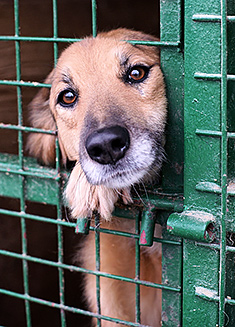
Shelter Dog Adoption Tips for Success
ADOPTION Are you intimidated by the prospect of "rescuing" a dog from a shelter? One reason that you may be wary of adopting a dog from a shelter is not knowing how to choose. Adopting a dog from a shelter can be a rewarding process, if you're prepared to do a reasonable amount of research.

Canine Urinary Tract Infections
SYMPTOMS AND TREATMENTDoes your dog seem to be having trouble relieving his or her bladder? Learn how to recognize the signs of urinary tract infections and how to treat them before they spread.

What to do for Dog Diarrhea
SYMPTOMS AND REMEDIESIf you have dogs in your house for any length of time, you have likely experienced at least one bout of dog diarrhea. Beyond the pain in the tuckus involved in cleaning up the mess, you should know what causes diarrhea, and when it's important to see the vet.
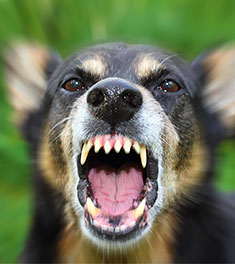
What to do for a Dog Bite
DOG BEHAVIOR Getting bitten by a dog can be scary, and you may be tempted to run around in circles for a while, trying to figure out what to do. Here's our guide to help you manage the situation.

Top Ten Tips for Living with a Senior Dog
DOG HEALTH Bringing home a new puppy is so exciting, but it doesn’t take all that long for your exuberant puppy to grow into a senior dog who may have special needs. Here are the doggies.com top ten tips for taking care of your companion who has been with you through so much.
